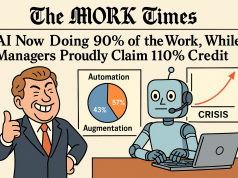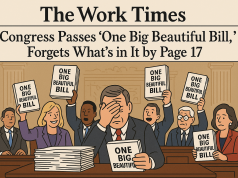[ad_1]

by Laura Stack, MBA, CSP, CPAE
“The two most powerful warriors are patience and time.”—Leo Tolstoy, Russian novelist, in War and Peace.
Late in June 2022, the U.S. Bureau of Labor Statistics released the results of the previous year’s American Time Use Study (ATUS), as it has annually since 2003. I’ve reported on it each year for more than a decade. The ATUS data for 2020, released in 2021, reflected significant effects from the COVID-19 pandemic that has gripped the nation since March 2020. Fortunately, during 2021, the crisis loosened its stranglehold on the economy, allowing it to bounce back to pre-plague levels. However, the economy has since fallen behind again due to the rise of the worst inflation since the 1980s (sure to be a significant factor in next year’s report).
A reminder: the ATUS study covers all individuals over 15 years old, including full-time high school and college students, the disabled, the unemployed, and retirees. It also covers every day of the week, including weekends and holidays. Therefore, the average hour per day worked may, at first glance, seem low. However, these numbers are averages for every day and every person, including those who didn’t work or worked only part time. In the 2021 data, it also includes almost 2 million people holding multiple jobs.
Home Work
While the 2021 work statistics resemble those of 2019, one difference from pre-COVID stats is a continuation of a phenomenon I’ve long seen as inevitable, but COVID just accelerated its development. The sharp increase in working from home reported last year continued in 2021, especially among professionals, with minor changes. No real surprise there, given the continuing pandemic and the fact that both workers and employers have become accustomed to people working from home. Indeed, a significant percentage of workers have refused to return to the traditional workplace, resulting in what employers have dubbed “the Great Resignation” when they’ve been pressed by employers to return (I’ve blogged about this recently).
As the pandemic forced continued use of videoconferencing and telecommuting technology (e.g., Skype and Zoom), 38% of employees did some or all their work from home, as opposed to 68% who did some or all their work from their workplace (these numbers exceed 100% because some workers did both). The 38% of individuals who worked at home in 2021 is down a bit from the 42% who worked from home during the 10 months recorded for 2020. That year, the reporting was late in starting, as the COVID-19 pandemic began in earnest. In 2021, those who worked at their workplaces averaged 7.84 hours on an average day they worked; people who worked at home worked an average of 5.61 days on days they worked. This lower number for those who worked at home may reflect less time spent commuting; however, again, this average includes all days of the week and holidays, which suggests most Americans are working significantly longer than the “standard” 40 hours per week.
Thirty-five percent of men worked at home on an average day, down a bit from 36% in 2020, while the number of women working from home dropped sharply from 49% to 41.5%, possibly because many children returned to school in 2021 and no longer needed home schooling and at-home supervision. Overall, workers in management and with higher levels of education tended to work more from home that those with less education. For example, 67% of workers with advanced degrees worked from home on days they worked, while just 19% of those with only a high school diploma did.
A bit under 51% of the population 15 years old or older worked in 2021, higher than the pre-COVID 2019 level of 49%, as opposed to an average of 39% in 2020. Clearly, millions of people were back to work as COVID restrictions eased nationwide and their jobs returned. The average number of hours worked on days worked (including weekends) rose to 7.75 as opposed to 7.6 in 2020, springing back above the 2019 level of 7.7. As counted by ATUS, “employed persons” includes full-time workers and part-time workers, which also lowers the average number of hours worked to below the expected eight hours; but interestingly, the sum across seven days adds up to over 50 hours weekly for the average worker.
The Takeaway
It’s clear that in 2021, the economy had begun to recover from COVID. It continued to stabilize for most of 2021, before inflation hit late in the year and in early 2022. In next year’s ATUS article, I expect to report a downturn in the economy, as we’re officially already in recession, though it’s hard to say how that will affect jobs. Non-salary workers may work longer, while both salary and wage workers may get part-time hourly-wage jobs on top of their main jobs to offset the increased costs of necessities like food and energy. We’ll see.So: how did the pandemic affect your work in 2021? Let us know in the Comments section.
© 2022 Laura Stack. Laura Stack, MBA, CSP, CPAE is an award-winning keynote speaker, bestselling author, and noted authority on employee and team productivity. She is the president of The Productivity Pro, Inc., a company dedicated to helping leaders increase workplace performance in high-stress environments. Stack has authored eight books, including FASTER TOGETHER: Accelerating Your Team’s Productivity (Berrett-Koehler 2018). She is a past president of the National Speakers Association, and a member of its exclusive Speaker Hall of Fame (with fewer than 175 members worldwide). Stack’s clients include Cisco Systems, Wal-Mart, and Bank of America, and she has been featured on the CBS Early Show and CNN, and in the New York Times. To have Laura Stack speak at an upcoming meeting or event, call 303-471-7401 or contact us online.
[ad_2]
Source link




























